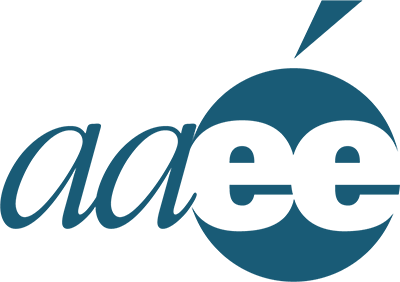Blessed by Burnout
....partial copy from previous site for demo purposes
Awareness
“Am I really making a difference in my students’ lives?” That weed of a thought was planted the year after what I expected would be my most challenging year as a teacher, the year of distance learning. Although I was in my 19th year of teaching, in many ways, I felt like a first year teacher again. The pandemic reset the experience clock. My colleagues and I faced an epidemic of new and difficult behaviors.
Burnout set in.
Burnout is an imbalance at the intrapersonal, interpersonal, and institutional levels with psychological and physical effects that reverberate at each of these levels (Maslach, 1997, p. 236). Its hallmarks include cynicism, exhaustion, and a sense of inefficacy, according to burnout researcher Christina Maslach (1997, p. xxii). A worker’s most vulnerable window of time for experiencing burnout is within the first five years of the job but it can happen at any point in a person’s career. An unexpected event - like the impacts of the recent COVID-19 pandemic - can exacerbate this phenomenon at any stage. A widespread post-pandemic increase in burnout is being felt across all fields. In-person teachers experienced such a marked and sudden change to their work, it’s no wonder that burnout seems even more prevalent among teachers than in other professions. We’re on a new playing field– in many ways, working a new job. Novice teachers and seasoned teachers alike are now equally susceptible to a divorce from job engagement.
Maslach asserts that burnout is not necessarily representative of a lack of resilience in the individual but is a symptom of the imbalance in the system. A mismatch of workload, control, community, values, or fairness contributes to burnout (Maslach, 1997, p. xxiii).
Understanding burnout erases any potential shame for embodying it. However, blaming the entrenched system is unproductive. Instead, we must ask ourselves, how might we adapt the system and better support those working within it?
Taking personal responsibility over burnout, rather than allowing it to overpower me, was essential for my growth as a teacher– as a person. Like engaging with a nightmare image through active imagination techniques, addressing my burnout was a call that I, at first, refused. The self-work seemed too difficult, until I began to contemplate the alternative– ceaseless isolation, continued neck problems, growing cynicism, and bone-deep exhaustion.
Not only did I lack job engagement, but, like many of my colleagues, I found myself lacking life engagement, abiding in a dark night of the soul. I leaned heavily on depth psychology. Specifically, a deeper understanding of projection became my entry point for healing.
Projection is an unconscious mechanism by which one throws out that which they cannot yet own in themselves onto another person or institution. “You spot it; you got it.” Recognizing one’s projections is a difficult task. It acts as a teacher using the discovery method, requiring a student to muddle through a challenge so that the learning is more memorable and the student’s self-trust grows. Fortunately, projections come with some indicators. Unfortunately, perhaps, those clues are wrapped in the form of overreactions, uncharacteristic reactions, harsh judgements, and hidden agendas.
For example, I was running late to work one day. On the way to my school, I found myself stuck behind a slow car. Usually, I am the slow driver and, typically, I feel relieved to relax behind the slower-than-me anomaly. That day, though, I became frustrated at cars whizzing by me as I waited for a space to pass the slower vehicle. “Put your blinker on, and someone will be nice,” rang my mom’s soft voice in my mind. I did. No one was nice. Even the driver behind me, who was sure to be aware of my blinker’s pleading intent, moved into the space for which I had waited. So selfish!
Then came the unexpected.
The driver from behind me slowed down in the left lane, purposefully creating an easy opening for me to enter.
“Awww,” I thought, as I waved my gratitude and moved into the pocket provided. Then, “Ohhhhh!” My internal dialogue shifted. What did my uncharacteristic judgemental frustration reveal about the part of me that’s hard to face– that part that is like a child who made a poor choice out of a desperate sense of self-preservation? In this situation, I– eventually and reluctantly– chose to ask myself, what selfish part of me did I falsely see in the driver with whom I never even spoke?
This self inquiry led to an automatic writing exercise later, in which I wrote a question with my dominant hand and responded with my non-dominant hand. The automatic writing sample below is one technique for reclaiming projections, once aware of them. Triggers house projections, working like the alarm in the home of our psyche that is activated by a sneaky, unwelcome intruder. The trick is that this visitor is really a banished part of ourselves that has come up from the basement, where it likely was exiled during childhood, when we were at our most impressionable and most vulnerable. It was in hiding because showing itself meant the risk of losing the acceptance of those we love.the people in their lives who were supposed to have the answers– the adults– didn’t. Culture dictates that they couldn’t be angry at the adults, so they took their sense of powerlessness out on each other. Bullying and mean acts ran rampant. The students’ parents, being human, blamed (read “projected on”) teachers, and public vitriol increased. Teachers blamed administrators. The destructive cycle of unconsciously unloading our unfinished business on others has contaminated our shared world. Awareness, compassion, and action are needed for healing.
Projections sneak up on us, even when we have practiced recognizing and reclaiming many. The practice requires patience, like a young student who has learned one-digit by one-digit division must exercise self-patience to get familiar with this skill. The initial learning is important but still needs to be applied over and over. Those who have put in this kind of self-work may begin noticing when they are projected upon, a helpful perspective when responsibly applied.
Moreover, burnout itself can be viewed as a deteriorated projection. We enter our career with positive projections on it. When these projections fall away and we are left with the realities of the career, some beautiful and some ugly, we have a choice. We can make the career transition that is the healthiest choice in some cases; bring our genuine selves to our current career and examine it authentically, taking the light to the candle; or we can let it all burn down.
Action
When my burnout began and teachers around me started leaving the profession, I feared for the future of education. Instead, I find that my personal psychological work toward wholeness allows me to make a greater positive impact than ever before, in and beyond my classroom.
As it turns out, the weed that burnout planted was fireweed. In nature, it’s the first life to grow after a wildfire and blossoms in stalks of vibrant pinks and purples. In human nature, where ashes of projection cool, new growth can be nurtured with vibrant results. Burnout can be a blessing when used as a catalyst for awareness, compassion, and action.
Just like strong first instruction supports mastery for our students, laying the groundwork of awareness and compassion creates a foundation from which action for the good of all rises. Rather than expanding in words on action, I charge the reader to take steps toward wholeness. Notice your own projections. Reclaim them, along with the lonely parts of yourself, using automatic writing as a powerful tool. With dedicated self-work, the wise teacher within will guide your right action.
*This article is intended to provide psychoeducation for self-help purposes. It is in no way a substitution for mental health services. A good burnout coach can provide invaluable support for healing, lifting you from a sense of isolation. If you are in unmanageable distress, seek help from a therapist.






